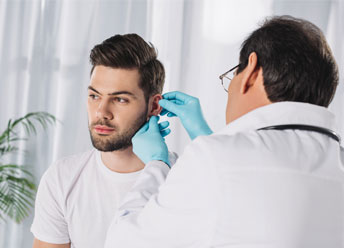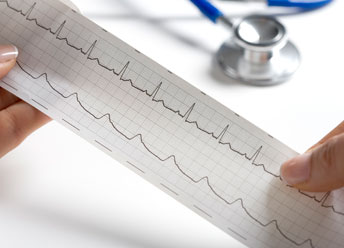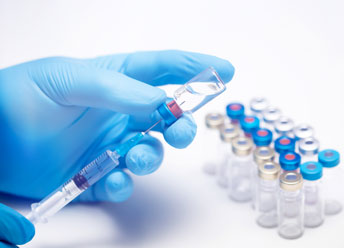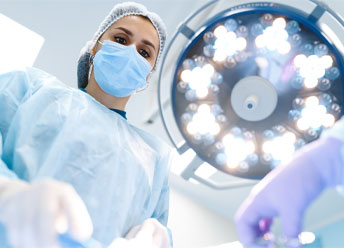We’ll Ensure You Always Get The Best Medical Services.
Energise Healthcare is a private clinic located in London. We aim to provide high quality, professional, and efficient medical services at affordable prices. Apart from the current medical services that are being provided, we will be soon extending our services to include a cosmetic clinic. We also provide our medical services in the comfort of your home.

Our Services
We provide excellent healthcare tailored to individual needs.
We will always have highly trained and experienced healthcare professionals.
To provide the right information and provide choices.
Complete transparency about fees and charge.

Vitamin B12 Injection
Vitamin B12 is a water-soluble vitamin and one of the 8 B vitamins that our body requires.

Ear Irrigation
Ear irrigation is an effective method of cleaning the ear. It involves flushing the ear with liquid to remove the wax build-up.

Wound Dressing
It is a true fact that wounds if not taken care of, can lead to further complications and also infections.

ECG
Electrocardiogram popularly known as ECG is used to record electric signals from your heart to check for different heart conditions.

Vaccines
There are few vaccines which provide immunity for life such as Measles and Hepatitis B, whereas Tetanus stays active for some years and requires periodical boosters.

Travel Vaccines
Travel vaccines are immunizations shots that travellers need to take before travelling to certain parts of the world to help protect themselves from a serious illness.

Stitches Removal
Stitches are used to close a variety of wound types. Accidental cuts or lacerations are often closed with stitches. Also, surgeons use stitches during operations to tie ends of bleeding blood vessels and to close surgical incisions.

Surgical staples removal
Surgical staples are used to close incisions after surgery. Staples may be a better option in some cases than stitches or sutures.
Frequently Asked Questions
Vitamin B12
Vitamin B12 is a water-soluble vitamin and one of the 8 B vitamins that our body requires. It is essential for a healthy immune system, plays a vital role in the metabolism of every cell in the body, and also helps to regulate mood.
Diet, Medication and Pernicious Anaemia (immune system attacks cells in your stomach that produce intrinsic factor), Alcohol and Smoking also contribute to the deficiency.
Weakness, Tiredness, Mouth Ulcers, Blurred vision, Poor Memory, Depression. In rare cases, it can cause heart and fertility problems. Some of these symptoms, like nerve damage, can be irreversible. Hence it is really important to check your Vitamin B12 levels.
Increase in concentration and energy levels, Boost Immune System. Improves Sleep Patterns, helps stop hair loss.
Pain, itching and redness at the site that the injection was administered, mild diarrhoea, muscle cramps, swelling of hands and ankles.
Severe reactions and rare but do need medical attention like breathing difficulties, swelling of hands and itching of face, throat and tongue, dizziness, slurred speech.
Meat, Milk, Cheese, Fish and eggs.
Ear Irrigation
Ear irrigation is an effective method of cleaning the ear. It involves flushing the ear with liquid (water or solution mixed with water) to remove the build-up.
If you face symptoms such as pain, itchiness and ringing in the ear, dizziness and coughing and also loss of hearing; do contact your audiologist to check if there is an earwax blockage.
Removing excess earwax through ear irrigation is a safe method with minimum risk of damage to the ear.
Your doctor will be able to advise you accordingly.
Ear irrigation involves flushing the ear with liquid (water or solution mixed with water) to remove the build-up. Most people have vouched for ear irrigation to be a comfortable process and is usually completed within 30 minutes.
Water or Solution mixed with water.
Wound Dressing
Wounds tend to heal differently for different individuals. Some heal quickly and some tend to take time to heal, which could lead to additional medical and other problems.
There are different types of wounds like leg ulcer, venous ulcers, arterial ulcers, diabetic foot ulcers, surgical wounds, accident related wounds, wounds in children & chronic wounds I(Ulcers). Laceration, Abrasion, Puncture are some more types of wounds.
ECG
Electrocardiogram popularly known as ECG, is used to record electric signals from your heart to check for different heart conditions.
ECG helps in detecting heart diseases, heart attacks, an enlarged heart, or an abnormal heart which may cause heart failures.
ECG results can be affected by exercise or smoking before the test, movements during the test, obesity and certain medications.
ECG is a quick and painless procedure. During an ECG, technician will attach electrodes with a gel to your chest, arm and legs. These electrodes are attached to a wire which is attached to a computer screen or printer.
Vaccines
Vaccination is of utmost importance as it protects children from serious sickness and complications of vaccine-preventable diseases which can lead to brain damage, amputation or paralysis of limbs, convulsions, hearing losses or even death. Measles, whooping cough and mumps are still a huge threat and are vaccine-preventable diseases.
It is advisable to vaccinate children over 6 months annually during flu season to avoid a potentially serious case. It is also advisable to immunise children against 14 vaccine-preventable diseases by their second birthdays.
Travel vaccines are immunisations shots that travellers need to take before travelling to certain parts of the world to help protect themselves from serious illness.
Many travellers catch viral or bacterial infections as well as other ailments when travelling abroad due to a number of factors. This is where Travel Vaccination comes in.
Vaccines, like any other medications, can have side-effects which are mild. Common side-effects are Redness or swelling around area of application, mild temperature. Irritation, drowsy or loss of appetite (common among children).
Stitches Removal
If a person has received stitches, they should be given instructions for taking care of the stitches and wound, and be given an approximate date to have the stitches removed. A sample of such instructions includes:
- Keep wound clean and dry for the first 24 hours.
- Showering is allowed after 48 hours, but do not soak the wound.
- Bandages can safely be removed from the wound after 48 hours, unless the wound continues to bleed or has a discharge. If bandages are kept in place and get wet, the wet bandage should be replaced with a clean dry bandage.
- An antibiotic ointment (brand names are Polysporin or Neosporin, for example) should be used after the wound is cleaned.
- Notify the doctor if a suture loosens or breaks.
- When scheduled to have the stitches removed, be sure to make an appointment with a person qualified to remove the stitches.
Different parts of the body require suture removal at varying times. Common periods of time for removal are as follows, but times vary according to the health care professionals that perform the procedure:
- Face: 3-5 days
- Scalp: 7-10 days
- Trunk: 7-10 days
- Arms and legs: 10-14 days
- Joints: 14 days
Sutures may be taken out all at one visit, or sometimes, they may be taken out over a period of days if the wound requires it.
Wound care after suture removal is just as important as it was prior to removal of the stitches. Take good care of the wound so it will heal and not scar.
- Keep adhesive strips on the wound for about 5 days. Then soak them for removal. Do not peel them off.
- Continue to keep the wound clean and dry.
- Skin regains tensile strength slowly. At the time of suture removal, the wound has only regained about 5%-10% of its strength. Therefore, protect the wound from injury during the next month.
- Injured tissue also requires additional protection from sun’s damaging ultraviolet rays for the next several months. The use of sunscreen during this period of healing is advised for those areas that are exposed.
- The use of vitamin E topically has also been suggested to be helpful in the healing process of the damaged skin. This should only be considered once the skin edges are healed and are closed together.
Call a doctor if you have any of these signs and symptoms after stitches (sutures) have been removed, redness, increasing pain, swelling, fever, red streaks progressing away from the sutured site, material (pus) coming from out of the wound, if the wound reopens, and bleeding.
Wound infection: If signs of infection begin, such as redness, increasing pain, swelling, and fever, contact a doctor immediately.
Wound reopening: If sutures are removed too early, or if excessive force is applied to the wound area, the wound can reopen. The doctor may restitch the wound or allow the wound to close by itself naturally to lessen the chances of infection.
Excessive scarring: All wounds will form a scar, and it will take months for a scar to completely contract and remodel to its permanent form. However, scarring may be excessive when sutures are not removed promptly or left in place for a prolonged period of time. This may result in a scar with the appearance of a “railroad track.”
Keloid formation: A keloid is a large, firm mass of scarlike tissue. This scarring extends beyond the original wound and tends to be darker than the normal skin. Keloids are common in wounds over the ears, waist, arms, elbows, shoulders, and especially the chest. Keloids occur when the body overreacts when forming a scar. They are common in African Americans and in anyone with a history of producing keloids. People with a tendency to form keloids should be closely monitored by the doctor. Injection of anti-inflammatory agents may decrease keloid formation. Also, large keloids can be removed, and a graft can be used to close the wound.
Hypertrophic scars: Bulky scars can remain within the boundaries of the original wound. These occur mostly around joints. Hypertrophic scars tend to develop a peak size and then get smaller over months to years. Keloids, on the other hand, rarely go away. For people with hypertrophic scars, a firm pressure dressing may aid in preventing them from forming.
Surgical staples
Surgical staples need to stay in for a few days or up to 21 days (in some cases) before they can be removed.
How long your staples must stay in place depends largely on where they’re placed and other factors such as:
- the size and direction of the incision
- the type of surgical procedure you had
- the complexity or severity of your incision or wound
- how quickly the area heals
For example, after a C-sectionTrusted Source, staples used to close a low transverse (horizontal across the body) incision may be removed after three to four days. But staples used in a vertical incision may not be removable for 7 to 10 days or more.
Several indicators that your surgical staples may be ready to be removed include:
- The area has healed well enough that staples aren’t needed anymore and the wound won’t reopen.
- There’s no pus, fluid, or blood drainage from the area.
- There aren’t any symptoms of infection.
Never try to remove surgical staples yourself at home. Always have a licensed medical professional remove staples.
Your doctor will follow special procedures and use specific tools in order to safely remove surgical staples without causing complications.
The exact staple removal procedures your doctor uses will depend on:
- where the staples are located on your body
- what type of surgery you had
- whether they’re used inside or outside your body
It’s usually not painful when your doctor removes your surgical staples. You may feel a tugging or pinching sensation as each staple is removed.
When removing your surgical staples, your doctor will follow these general steps:
- Remove any wound dressing or other materials covering the area.
- Look for any abnormal symptoms or issues with the wound’s appearance.
- Clean and sterilize the entire area with medical antiseptics.
- Slide the lower part of a staple extractor tool underneath the outermost staple on either side of the stapled area.
- Wiggle the staple gently side to side until it comes out of the skin.
- Put the staple on a clean sheet of gauze immediately.
- Repeat steps 4 to 6 on every second staple along the area until the end of the incision is reached. You may not have all your staples removed at a single appointment if the area is not fully healed.
- Remove all remaining staples.
- Put a sterile strip on each area from which a staple was removed.
Some staples may stay inside your body permanently. This is often done to keep internal organ tissues connected and resistant to further damage.
Surgical staples are used to close surgical incisions or wounds that are too big or complex to close with traditional stitches. Using staples can decrease the needed to complete surgery and can be less painful.
Staples may be simpler, stronger, and speedier to use to close large, open wounds than traditional stitches, and may be used after major surgery.
For example, staples are often used after C-sections because they help the incision heal faster while also reducing scar appearance.
After getting staples, the following steps will help keep them clean as you heal:
- Follow all postsurgical instructions from your doctor.
- Don’t remove any dressings or bandages until your doctor says it’s safe to do so.
- Rinse the area gently with clean water twice a day.
- Use Vaseline or petroleum jelly and a sterile bandage that doesn’t stick to cover the area.
- Replace bandages at least once a day or every time it gets soiled or wet.
Some common surgical staple materials include:
- Titanium. Known to easily adhere to both bodily tissues and bone, titanium is less likely to cause inflammation or infection.
- Plastic. This material is used if you’re allergic to metals found in other surgical staples.
- stainless steel. Plastic is commonly used for staples and may help reduce scar appearance.
- Polylactide-polyglycolide copolymer. This material is easily reabsorbed into the body. It’s popular in plastic surgery because it’s less likely to leave a noticeable scar following healing.
Surgical staples are placed with a special stapler.
They don’t look quite the one on your desk. Surgical staplers look more like commercial-grade construction staplers with a handle and lever that your doctor pushes down to place the staple.
Surgeons use these specially designed staplers to safely, quickly, and precisely place surgical staples on a wound. The process is much faster than stitching or suturing because the staples are placed instantly.
Surgical staples do carry some risks, including:
- infection from not taking care of the wound (or from bacteria getting into the area)
- improper placement of the staples causing the wound to heal poorly or not close all the way
- wound reopening after staple removal (if staples are removed too early)
- allergic reaction to staple materials
Seek emergency medical attention if you notice any of the following symptoms around the area that’s been stapled:
- severe or new pain
- bleeding from your incision
- redness or swelling of your incision and surrounding area
- increase in the size or depth of the stapled area
- dark or dry appearance around the stapled area
- thick, bad-smelling pus or discharge colored yellow, green, or brown
- low-grade fever (100°F or higher) that lasts for four hours or more
